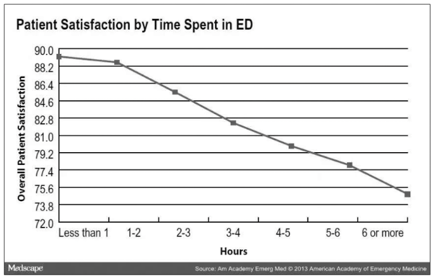Many head injured patients arrive in the Emergency Department (ED) expecting a head CT “to be sure” their injury is not severe. Not fully understanding that while a head CT can identify if a brain bleed has occurred, it cannot detect a concussion, patients will often press for a head CT, as they find satisfaction in knowing “something was done” during their visit.
Most mild (13-15 on the Glasgow Coma Scale) head injured patients that visit the ED will have a normal CT scan. This can be frustrating for patients, as some will spend an average of 6+ hours in the ED waiting their turn for the CT machine and post-test analysis. Clinicians balance choosing the right care for their patients with the least amount of risk and cost to both the patient and the hospital. CT scans deliver up to 400x the radiation of a dental X-ray, and patients may be subjected to unexpected out of pocket costs. Recommendations from Centers for Medicare and Medicaid Services (CMS) and ACEP’s Choosing Wisely© put increasing pressure on clinicians to reduce head CT utilization. Additionally, a head CT only answers one question – is there a structural brain injury (bleed). Still outstanding is an objective assessment of the likelihood and severity of a concussion.
After 6+hours in the ED, not including any wait time prior to being seen, a negative CT result, and a subjective concussion evaluation, the patient experience is often less than optimal. The chart below from AAEM’s Cracking the Code: Fixing the Crowded Emergency Department, shows how patient satisfaction trends with time spent in the ED.

How can clinicians bridge the gap between patient expectations and their care goals?
BrainScope offers clinicians a decision support tool to triage head injured patients at point of care. Using EEG based technology, the radiation-free assessment indicates the likelihood of being negative for brain bleed on a CT scan and identifies patients that need further evaluation. With the same assessment, patients receive results on the likelihood and severity of concussion. This can help provide informed referrals for post-acute care if necessary. The assessment takes less than 20 minutes from start to finish and can be done fully in the ED, or even the waiting room if hospital protocol allows.
BrainScope supports patient expectations to have “something done” during their visit and supports clinician goals of having an objective tool to aid in ruling out head CT. In routine clinical use, BrainScope has demonstrated a 40%-60% reduction in unnecessary CT utilization, a 40% decrease in length of stay, and 100% patient satisfaction.
